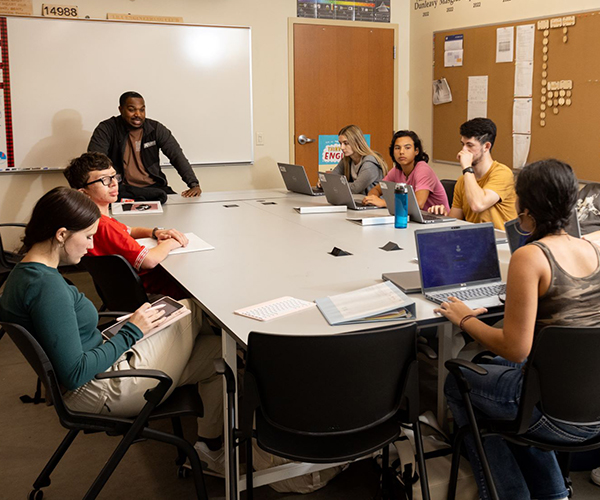The Grown-up's Guide to Child Care
We dive into the ins and outs of child care with local moms, teachers and admin
by Jacqueline Marino | Jan. 26, 2005 | 5:00 AM
|
What to look for on your visit to a center: 1. Do the children look happy and healthy? 2. Are there enoughteachers to respond to the children's needs? 3. Do the teachers seem to love children? During your visit, ask yourself: 1. Is the center affordable and convenient for you? 2. Is the facility neat, clean and spacious? Questions to ask: 1. What is the highest level of education obtained by the lead teacher in a classroom? 2. What level of training do those working directly with your child possess? 3. What is the level of staff turnover? What types of jobs do they take when they leave? 4. What type of ongoing training do teachers receive? Questions to ask: 1. What activities make up a typical day? 2. What educational value are the children receiving from these activities? View the complete child-care center chart. Click here. |
Though the children don't realize it, the activity is shaping them as well. It's developing their motor skills, stimulating creative thinking and cultivating problem-solving techniques — helping them decide, perhaps, what to do when one child hoards all the glitter. The activity fits right into WSEM's High/Scope educational approach, where teachers create educational experiences out of the children's interests. The pictures, for instance, were sparked by the colored leaves the children noticed on a fall walk.
"If a child shows interest, we pick up on it," says Kathy Krosky, education coordinator. "It's hands on, play based. They can play in the dirt if they want to play in the dirt."
After five minutes in this classroom of 3-, 4- and 5-year olds, it's clear that the children are getting far more intellectual stimulation than they would at home with a baby-sitter. Spend a little longer with the teachers and administrators, however, and you'll learn that things could be improved at this nonprofit center that serves 148 children, ages four weeks to 12 years.
And the teachers and administrators know it.
WSEM boasts impressive teacher-child ratios and teacher education levels, but, as of our October visit, Krosky said WSEM's staff turnover rate was too high and it probably didn't have all the classroom learning equipment necessary to meet national standards.
Like most child-care centers in Cuyahoga, Lorain, Medina, Portage, Summit, Geauga and Lake counties, WSEM isn't accredited by the National Association for the Education of Young Children, the gold standard in child care and early education. To achieve accreditation, centers must go beyond the state's basic health and safety requirements to meet national quality standards.
Most parents wouldn't consider sending their teen-ager to a college that wasn't accredited, yet they send their young children to child-care centers much farther behind WSEM, which is actively pursuing NAEYC accreditation. Some centers just barely meet state health and safety standards — and parents don't even realize it.
"People don't know what quality looks like," says Marcia Egbert, senior program officer for The George Gund Foundation, which funds efforts to improve child care.
But what is quality child care? It's hard to define and even harder to find.
Parents don't have standardized test scores or college-admission rates to consult when choosing a child-care center. More than anything, they rely on word of mouth and their own fleeting impressions. Location, cost and space availability further limit options, especially among the middle class, who receive no government assistance, and West Siders, who have fewer child-care centers from which to choose. Centers with good reputations often have long waiting lists — three months, six months, a year. Even then, many parents don't realize that the child care they're getting probably should be better.
Most centers would like to meet national quality standards. Many simply can't afford to. There are no levies on the ballot to help pay child-care teachers, buy their supplies or improve their facilities. Center directors must rely on inadequate reimbursements from the state and parent fees that cannot be set high enough to cover the cost of quality care. (Already, a family making the state's median family income, $50,377, has to spend 12 percent of it on full-time infant care). To pay the bills, directors cobble together grants and fund-raising revenue.
The state's child-care division is headed by strong advocates who have instituted some helpful new programs, including a voluntary rating system and an initiative to improve infant and toddler care. But legislators have yet to make child care a major priority. While states such as Pennsylvania and Arkansas have dramatically expanded funding for prekindergarten, for instance, Ohio continues to rely on the federal government to fund most of its child-care programs.
When you consider what's at stake, shortchanging child care is unfair and unwise. Advocates ranging from police chiefs to economists say that good early care reduces juvenile delinquency, teen pregnancies, welfare dependence and unemployment while improving high-school graduation rates, test scores and even nutrition. Researchers from the Brookings Institution have said that investing in early education provides society "with estimated rates of return that would make a venture capitalist envious."
Ohio has a long way to go to realize it's early care potential. But at least with Step Up to Quality, a voluntary rating system designed to improve quality at child- care centers, and other new state initiatives under way, Billie Osborne- Fears is finally optimistic. As the executive director of Starting Point, a child-care resource and referral agency for Cuyahoga, Geauga, Lake, and Ashtabula counties, she understands the problems of our area's child-care centers: an underpaid and undereducated work force and too-high teacher ratios and turnover rates.
"In our area, I'd say all the centers need help," she says.
How a child spends the first three years of life is crucial to her physical, emotional, social and intellectual development. That's when she learns to learn, problem-solve, make friends, trust and love. By age 2, her brain has attained 90 percent of its growth. Synapses she has not used during that time will be lost.
Even before researchers affirmed that a child's early years sketch the road map for the rest of his life, parents suspected as much. What new mother hasn't worried that her actions then might mess up her child's life forever?
Multiply those worries exponentially when she has to leave her baby in someone else's care for up to 10 hours a day. This is the reality for many mothers of young children in Ohio — and for me. My 8-month-old daughter is among the 62 percent of children younger than 6 whose parents are all in the work force. That's up from 55 percent in 1990, according to Build Ohio, a child-advocacy alliance.
Forget the recent articles in Newsweek and The New York Times Magazine, chronicling the supposed trend of stay-at-home moms who are burying their B.A.s and J.D.s under Baby Einstein toys and the latest fashions from Gymboree to raise their children. In Ohio, more moms are choosing work and contending with the mommy guilt that goes with it.
Imagine my surprise — and relief — to discover that child care can be good for children. It can prepare them for kindergarten, increase their scores on tests measuring thinking ability and language development, polish their social skills and increase their self-esteem.
But there's a catch. Children only get these benefits if they are in the type of program that early childhood types label "quality." So I vowed to figure out what quality child care is and find it.
I started my search when I was only 4 months pregnant — almost a year before I needed child care. I didn't know the baby's gender, let alone her temperament or whether she'd have special needs. Yet, I had to line up people to care for her 50-plus hours a week. I'd been warned that the waiting lists for good centers, especially on the West Side where we live, would be long. I admit I didn't do my homework, thinking I'd just pop into a couple of centers near my home and know quality when I saw it.
The first center I visited was in a new, well-landscaped building with lots of parking and a fun, fenced-in little playground out back. How cute, I thought, imagining my little one on a swing, legs pumping hard, sky-bound. Then I went inside. The infant room immediately killed my enthusiasm.
Though I didn't know it at the time, the state's teacher-child ratio requirement was being violated before my eyes. I counted 13 babies. (The state requires that the ratio be not more than one teacher for every five infants under a year old.) Some were alone in their cribs, which were lined up in darkened rows like something out of Charles Dickens. One sullen-faced worker was shoveling food into the mouths of several infants at once. Another wasn't tending to the children at all, just walking in and out of the room doing who knows what. The rest of the babies were confined to bouncers or exersaucers. I could barely hear the director over all the crying.
My first thought — after No way am I putting my baby here — was How can the state allow this?
LESSON #1
Just because a center is licensed by the state doesn't mean it's a quality center.
Just as having a driver's license doesn't mean someone's a good driver, having a child-care license doesn't mean a center has achieved quality standards. A license indicates only that a center has met the minimum health and safety requirements.
And the minimum isn't good enough, according to child advocates. Even Carol Ann Ankrom — Ohio's licensing chief — describes the regulations as "mediocre."
Take the staff-child ratio, for instance. The lower, the better. But in Ohio, licensed centers can have ratios one child higher per teacher than NAEYC likes to see; it recommends one teacher to every four babies, every five 1- to 2-year-olds and every six 2- to 3-year-olds.
Most agree that NAEYC accreditation is a better measuring stick for quality — though certainly not the only measuring stick — than licensing. Yet, as of September 2004, only 6 percent of the 1,020 licensed child-care centers in Cuyahoga, Lorain, Geauga, Lake, Portage, Medina and Summit counties were accredited (compared to 7 percent to 8 percent nationwide).
There were only two accredited child-care centers that took infants close to my home, and it wasn't possible to get my child into either. One center is used exclusively by NASA employees. The other, Lakewood Hospital, gives its employees priority, and its director all but assured me that my baby wouldn't get in.
Thankfully, when I did more research, I learned that centers that haven't earned accreditation — and the blue-ribbon "quality" status that comes with it — can still be good. (The accreditation process is lengthy and expensive, and some centers prefer to spend their resources in other ways.)
The referral agency Starting Point sent me a list of nearby centers and contact information. Over the phone, I could find out the cost of care for each. But I quickly learned that cost alone is not a reliable indicator of quality. That first center I visited charged around $170 a week for its heart-wrenching brand of infant care.
LESSON #2
You don't necessarily get what you pay for in child care.
"You'd like to think that if you're paying $275 a week at some high-end place, as opposed to someone who's paying $110 somewhere, you're hoping that's a peace of mind," says Jamie Gottesman, assistant bureau chief for the state Bureau of Child Care and Development. "Unfortunately, in child care, it's not. That little person could still be in a crib for 35 minutes with nobody addressing him and crying their little eyes out."
I didn't visit any centers that charged $275 a week. Most ranged between $150 and $190. The farther into the suburbs I got, the more the care seemed to cost. But regardless of whether a center's in an eclectic urban neighborhood or an isolated suburban office park, there's a real possibility that it cuts corners on staffing. The state Department of Job and Family Services says its 2004 licensing statistics "continue to reflect a historical observation that centers are not properly staffed." The findings are particularly chilling considering that the state isn't even measuring quality, only health and safety.
So how do you know you're getting your money's worth? That's tough to answer unless you plan to outfit your child's jumper with a spycam. The experts I consulted recommend observing the center's teachers closely when you visit.
I eliminated one center as soon as I saw the infant-room teachers. They didn't even make eye contact with me. Like worker-bots, they moved from diaper table to sink to crib to highchair, their faces betraying no emotion, even as their little charges looked up at them yearningly.
When parents visit a center, it should be obvious that the teachers love the kids, advises Starting Point. Teachers should talk and play with them, responding quickly when they're needed.
And this is the bare minimum. Increasingly, research shows that a teacher's ability to mold your child is tied to her education level. It's better if teachers have training, preferably degrees, in child development or a related field.
LESSON #3
Not all child-care workers have a great deal of training or degrees in early childhood development.
To be hired as a child-care worker in Ohio, all that's needed is a high-school diploma. Workers then have three years to obtain 45 hours of child-care training.
Lori McClung, senior fellow at the Center for Community Solutions, has talked with legislators who don't buy the argument that child-care workers need more education. Inevitably, one will tell her how he was raised by his grandmother or some other person without a college degree and turned out just fine. McClung tells them that we know much more about early childhood development now than we did then. Mainly, we know that well-educated teachers help prepare children better for school.
Teachers with special training in an early education-related field are more effective than those with high-school diplomas. When it comes to preschool, teachers with four-year degrees appear to be the most effective, according to 2003 research by the Center for the Study of Child Care Employment.
NAEYC calls the training of child-care staff "crucial" to quality and recommends ongoing training. And the state's Step Up to Quality program encourages lead teachers in every classroom to get an associate's degree in early childhood education.
Most center directors would like their staffers to get more education. But when they do, many leave for more lucrative teaching jobs.
"There's a natural migration," says Gottesman, who was a child-care center director before coming to work for the state. "When someone in a child-care center gets more schooling, they can go to work for Head Start and make more money. Head Start pays for them to get their associate's degree. When they get their associate's degree, they leave Head Start and they go to public pre-K."
LESSON #4
Child-care workers are not baby-sitters. They're teachers.
My husband and I don't have a relative who can watch our daughter full time. We can't afford a nanny and didn't like the idea of leaving her in someone else's home. So a child-care center was our only option.
I quickly realized that the workers in child-care centers generally know more about children than I do. At minimum, child-care workers in Ohio must be trained in child development, first aid, and communicable-disease and child-abuse recognition and prevention. Increasingly, they are being expected to make every minute a child is in their care add up to a learning experience.
"You have to be a nurse. You have to be an educator. You have to be an environmental specialist," says Susan M. Hyland, director of Berea's Children's Home's Family Life Programs. "And above all, you have to have a loving relationship with the child."
Consider this scenario, described by WSEM site administrator Cheri Caster, who oversees the entire preschool staff: Two children are fighting over a toy. In your home, your baby-sitter might take the toy away to end the bickering. At WSEM, however, Caster says she would have the children work out their problem themselves, while she mediates. No matter what the children decide to do, they learn an important lesson: There won't always be a higher authority swooping in to solve their problems.
At the center where we eventually placed Stella — after being on a waiting list for nine months — the nursery's lead teacher has a degree in early childhood education. The director spent a lot of time talking with us about her philosophy of child care, assuring us that staff turnover is low and even digging out information to prove that her teachers earn competitive salaries and benefits. The deciding factor for us, though, was the feel of the place. The teachers fawned over Stella, then 4 months old, during our visits. The younger babies looked content and the older ones looked engaged. We rarely saw a teacher without a child in her arms.
So far, we've been satisfied with the care Stella's received. Each night, there's a report tucked into a pocket on her crib detailing how much she ate, how many times her diaper was changed and how often she napped, as well as a form on the door describing how she spent her day (reading books, floor time).
At long last, I feel I've found a quality — though not accredited — child-care center. But how can I know for sure? The definition still eludes me.
So I asked a group of center directors, who gathered at Starting Point this fall to help us figure out why quality, affordable child care is so hard to find. The conversation went around and around.
"Quality is elusive," explains Joan M. Hamm, director of Children First of Cleveland, "because it's always changing."
Even NAEYC won't give a concrete definition in terms of specific ratios or curriculum information. Instead, it outlines a set of criteria that, when met, comes as close as possible to guaranteeing a center has what it takes to fully develop each child's potential.
In addition to the basics — ensuring that children are safe and happy — quality child- care centers have low teacher-child ratios and low overall group size, a low staff turnover, teachers who are well trained and who lead developmentally appropriate activities.
I would add that quality means different things to different people. Some are satisfied with the basics. Others look for specific educational features, such as music classes and field trips. Still others look for cultural diversity or teachers willing to contend with cloth diapers and serve organic baby food.
There's only one thing about quality child-care centers, unfortunately, that everyone can agree on: There are not enough of them.
To find out about child-care centers in Cuyahoga, Lake, Geauga or Ashtabula counties, contact Starting Point at (216) 575-0061, 1-800-880-0971 or www.starting-point.org. For information on centers outside of those counties, contact the Ohio Child Care Resource and Referral Association at (614) 849-0500, 1-877-547-6978 or www.occrra.org. They can give you contact information for nearby centers, as well as basic information about programs and cost.
To check out the health and safety record of a specific center, go to the state's Web site, www.jfs.ohio.gov/cdc. As early as March, parents can check the quality status of centers participating in the Step Up to Quality program on this site as well. To find out if a center is accredited, you can visit the NAEYC's Web site, www.naeyc.org.
Nothing replaces actually visiting the center yourself, spending time in the classrooms and talking with the staff. Ask yourself, Is this a place where I will feel comfortable leaving my child? No one can answer that question but you.
Trending
-
1
-
2
-
3
-
4
-
5










